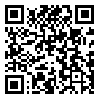BibTeX | RIS | EndNote | Medlars | ProCite | Reference Manager | RefWorks
Send citation to:
URL: http://jdisabilstud.org/article-1-2051-en.html
2- Professor, Department of Educational Psychology, Marvdasht Branch, Islamic Azad University, Marvdasht,Iran
3- Professor, Department of General Psychology, Marvdasht Branch, Islamic Azad University, Marvdasht, Iran
4- Assistant Professor, Department of General Psychology, Marvdasht Branch, Islamic Azad University, Marvdasht, Iran
Abstract
Background & Objectives: The educational measures parents take for children's moral and emotional upbringing and their meta–emotional styles may play a significant role in developing and using children's moral emotions. Moral emotions have a major role in daily life; one key factor distinguishing people is emotions. Most researchers believe that moral emotions initiate from social communication and are connected to evaluating your and others' behavior, possibly affecting our interactions with others. The researches show that emotions, especially moral emotions, are effective in forming moral behaviors. So, the current study investigates the mediating role of adolescents' moral and emotional attribution styles in the relationship between the meta–emotional styles of parents and moral emotions (shame and guilt) in adolescents.
Methods: The current research method was descriptive correlational performed using structural equation modeling. The statistical population included Shiraz high school 10th– and 11th– grade students in 2017–2018. They were 422 students (240 boys and 182 girls) of the 10th (206 individuals) and 11th (216 individuals) grades selected in Shiraz High School. The sampling method was multi–stage cluster sampling. For this purpose, two districts were chosen randomly among the four educational districts of Shiraz. Then, two schools (one for girls and one for boys) and two classes (one 10th grade and one 11th grade) were randomly selected from each district. The inclusion criteria were to be in the 10th and 11th grades. The exclusion criterion was incomplete completion of the research questionnaires. The study data were gathered via the Parental Meta–Emotional View Questionnaire (Evelynekehe, 2006), Test of Self–Conscious Affect–3 (TOSCA–3) (Tangney et al., 2000), and Moral Emotional Attribution Styles (Amiri, 2012). The obtained data were analyzed by descriptive and inferential statistics. At the descriptive level, the mean and standard deviation and the inferential level, the Pearson correlation coefficient, and the path analysis and structural equation modeling were used in SPSS 21 and AMOS 21 software. The significance level for all statistical tests was α=0.05.
Results: Findings showed that parental emotional guidance was a direct and significant predictor of guilt (p=0.038, β=0.11) and an inverse and significant predictor of shame (p=0.045, β=–0.09). Emotional awareness did not significantly predict shame (p=0.110, β=–0.016) and guilt (p=0.060, β=0.038). Positive emotional attribution mediated between emotional guidance with shame (p=0.040, β=0.03) and guilt (p=0.030, β=0.09). Positive emotional attribution mediated between emotional awareness with shame (p=0.013, β=0.053) and guilt (p=0.002, β=0.07). Negative emotional attribution mediated between emotional guidance with shame (p=0.050, β=0.04) and guilt (p=0.010, β=0.03). Negative emotional attribution mediated between emotional awareness and shame (p=0.001, β=0.10). Based on goodness of fit indices, the final research model fit relatively well with the data (χ2/df=2.331, AGFI=0.87, GFI=0.89, CFI=0.90, RMSEA=0.052).
Conclusion: Based on the research's findings, positive emotional attribution mediates between parents' meta emotional styles (emotional guidance and emotional awareness) and adolescents' shame and guilt. Also, negative emotional attribution plays a mediating role between the dimension of parents' emotional guidance and teenagers' emotions of shame and guilt, as well as between the dimension of emotional awareness and teenagers' emotion of shame.
| Rights and permissions | |
 |
This work is licensed under a Creative Commons Attribution-NonCommercial 4.0 International License. |



